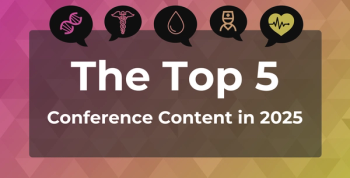
Low SES Linked With Lower Overall Survival in Early-Onset Prostate Cancer
Researchers suggest socioeconomic status (SES) be considered in prognostic algorithms going forward.
Socioeconomic inequities affect overall survival (OS) in men with early-onset
Because of this, socioeconomic status (SES) “could be considered in prognostic algorithms and implemented in management programs to improve overall outcomes among these men,” authors wrote.
Study findings were published
Around 10 % of new prostate cancer diagnoses occur in men aged 55 and under. However, this age group has experienced the greatest disease increase in recent decades, the researchers explained. In addition, those with diagnosed early-onset disease tend to have worst 5- and 10-year survival rates compared with men whose disease is diagnosed between the ages of 56 and 80.
Because of their extended life expectancy, those with early-onset prostate cancer are also at a higher risk of disease progression.
Biology likely plays an important role when it comes to differences in clinicopathologic features among patients with early-onset prostate cancer, the authors said. However, socioeconomic factors may also play a role.
To better understand the degree of impact of SES has on disease features and outcomes among patients with early-onset prostate cancer, the researchers analyzed data from the National Cancer Database for 2004 to 2018. The database includes information from over 1500 hospitals, accounting for nearly 34 million records and representing around 70% of all new cancer cases in the United States. The researchers assessed SES by income and education level.
A total of 112,563 individuals were included in the analysis, with a median follow-up of 79 months.
Data revealed these results (all P < .001):
- Compared with high-SES patients, low-SES patients were more likely to be African American (42.4% vs 8.6%), Hispanic (9.5% vs 2.7%), and uninsured (5.2% vs 1.1%)
- Low-SES patients were also more likely to live in a rural area (3.2% vs 0.1%) and have stage IV disease (5.5% vs 3.1%)
- Kaplan-Meier analysis showed that a decreasing SES was directly associated with lower rates of OS (log-rank test P<.001)
- On multivariable analysis, SES was found to have a negative effect on OS (low SES vs high SES; HR, 1.54; 95% CI, 1.41-1.68)
Overall, SES was linked with lower OS in patients with early-onset prostate cancer. Additional predictors of morality included age, cancer stage, comorbidity burden, and insurance status.
In general, men with low SES tend to have a higher comorbidity burden, the authors wrote.
“These men usually have poor general health and lifestyle risk factors, including physical inactivity and smoking, along with a higher incidence of obesity and metabolic syndrome, which limit the options for definitive treatment. In the current study, we showed that patients with low SES are more likely to have a higher comorbidity burden, and a higher comorbidity burden was associated with worse OS,” they added.
The researchers also found low-SES patients were less likely to receive care at integrated network cancer programs.
The retrospective nature of the study marks a limitation. In addition, SES based on education and income level does not cover all aspects of SES that concern health. Other factors like health awareness and lifestyle habits were not measured.
“We were only able to assess the overall among young men with prostate cancer; however, we are not able to assess prostate cancer–specific survival or recurrence due to the absence of such information in the National Cancer Database,” the authors concluded.
Reference
Riveros C, Al-Toubat M, Chalfant V, et al. The impact of socioeconomic status on the survival of men with early-onset prostate cancer. Am J Clin Exp Urol. 2023;11(2):146-154.
Newsletter
Stay ahead of policy, cost, and value—subscribe to AJMC for expert insights at the intersection of clinical care and health economics.








































